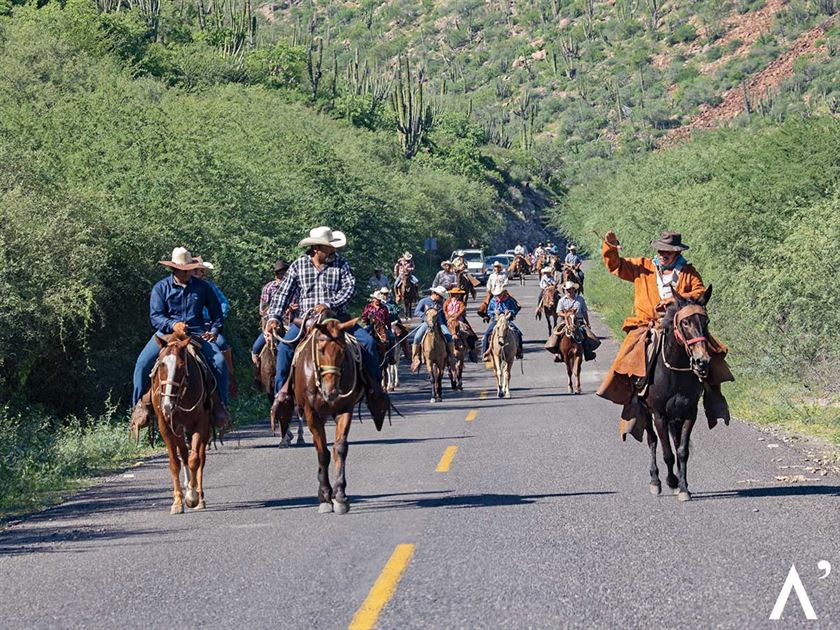The Sierra de la Giganta descend towards the Pacific Ocean and there is a long, sinuous, green ravine on the slope where two towns have been located since 1714: San Jose de Comondu and San Miguel de Comondu, colloquially called Los Comondu.
Are you interested in learning about the people and their environment from centuries past? Upon reaching the ravine, you will immediately experience the wonder of finding an oasis in the immensity of the desert plains of Mexican California. You will also discover that the traditions of two centuries ago subsist almost intact.
When visiting Los Comondu, you will inevitably notice and then become infected by the simple, different way of life. In spite of being peaceful and relaxed, the people of Los Comondu maintain the discipline of demanding and continuous ranch work. At the same time, they steadfastly keep up the friendly hospitality offered travelers.

The towns are separated by a two-mile road that was part of the Camino Real Misional. The people live among small orchards divided by a crystalline, freshwater stream that gushes out in springs located in the eastern part of the ravine. The ravine has been called Arroyo de San Jose since the time of the Jesuits. The stream meanders capriciously on a route approaching one or the other of the cliffs that border the canyon. The mission of San Jose de Comondu had the largest of the missionary churches, part of which has been preserved.
The towns played a major role in the development of the peninsula. However, their populations declined after being bypassed by the Transpeninsular Highway. Not so the essence of the inhabitants. Their particular way of life that is characteristic of the Californian heirs of the missionary landscape remains strong today. The people continue the agricultural and livestock traditions started by the missionaries, and like the hunter-gatherers who lived there before, they have respect for the land and know how to manage the resources that have been offered them. To survive and progress, they developed a coordinated, hard-working, honest, disciplined and austere society that achieved modest prosperity complemented by an education, both familial and formal, based on human values.
[two_first]
[/two_first][two_second]

[/two_second]
If you stay at least a couple of days, you will get to know some of the traditions, including the gastronomy, patron saint festivities, horseback riding, missionary wine and the relationships between the people. There are other things to as well, such as hiking to the cave paintings and basaltic prisms, true treasures. The Comondu offered those of us who visited a little bit of Eden. No wonder a Mexican author once considered Los Comondu a place “where the existence of Shangri-la is verified.”






